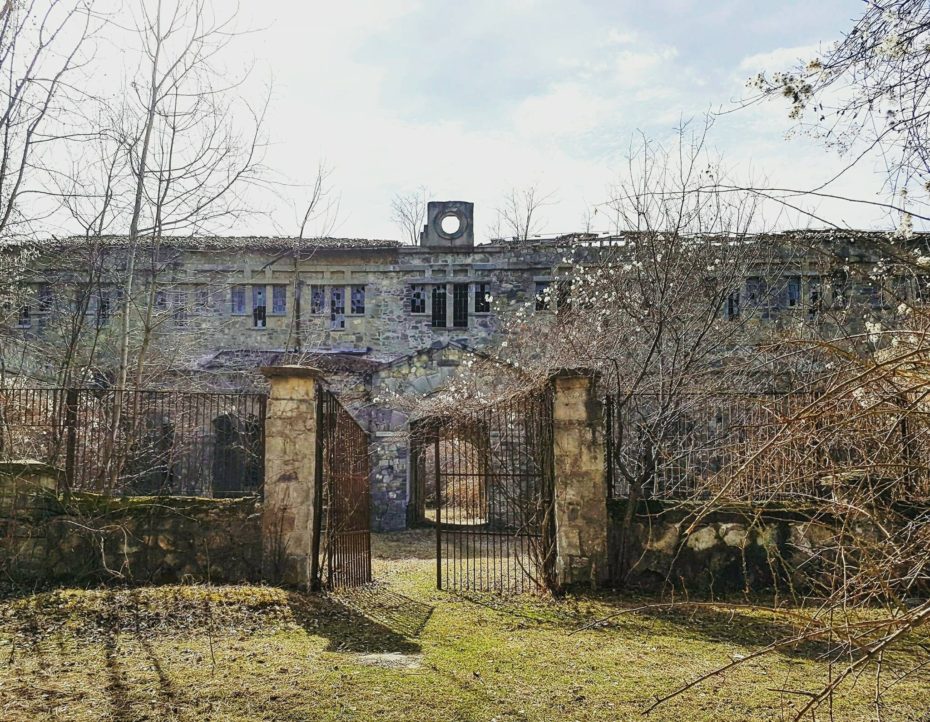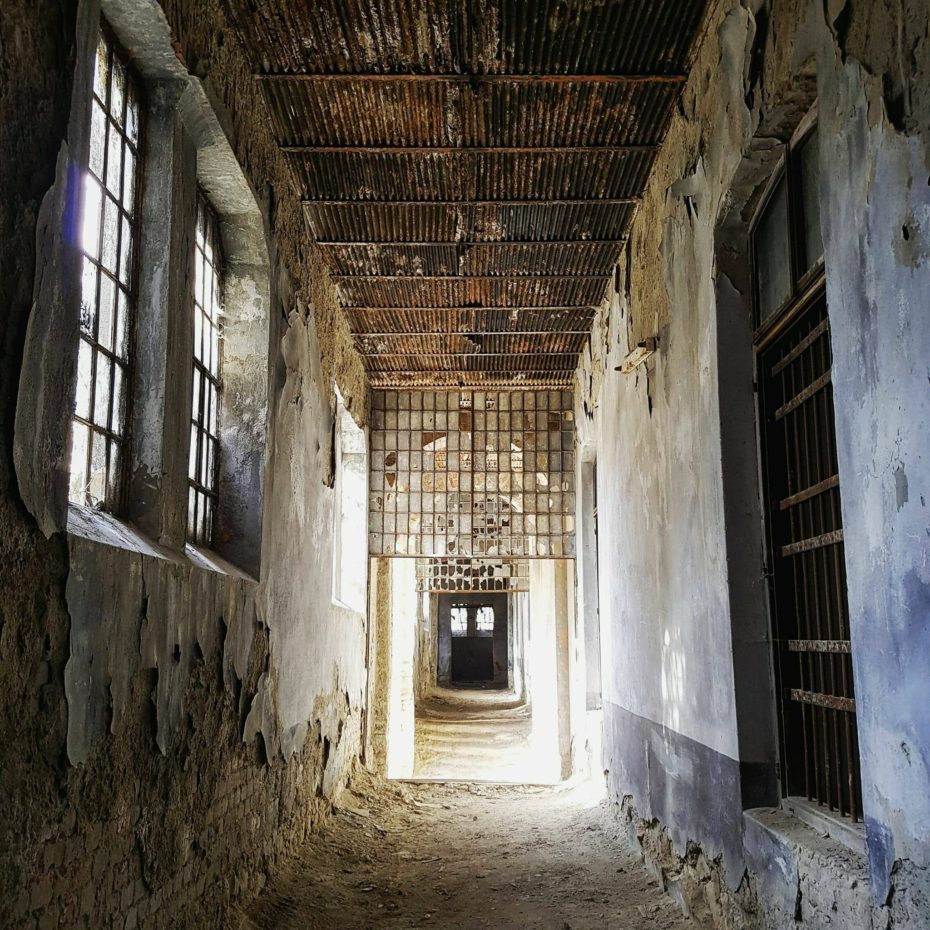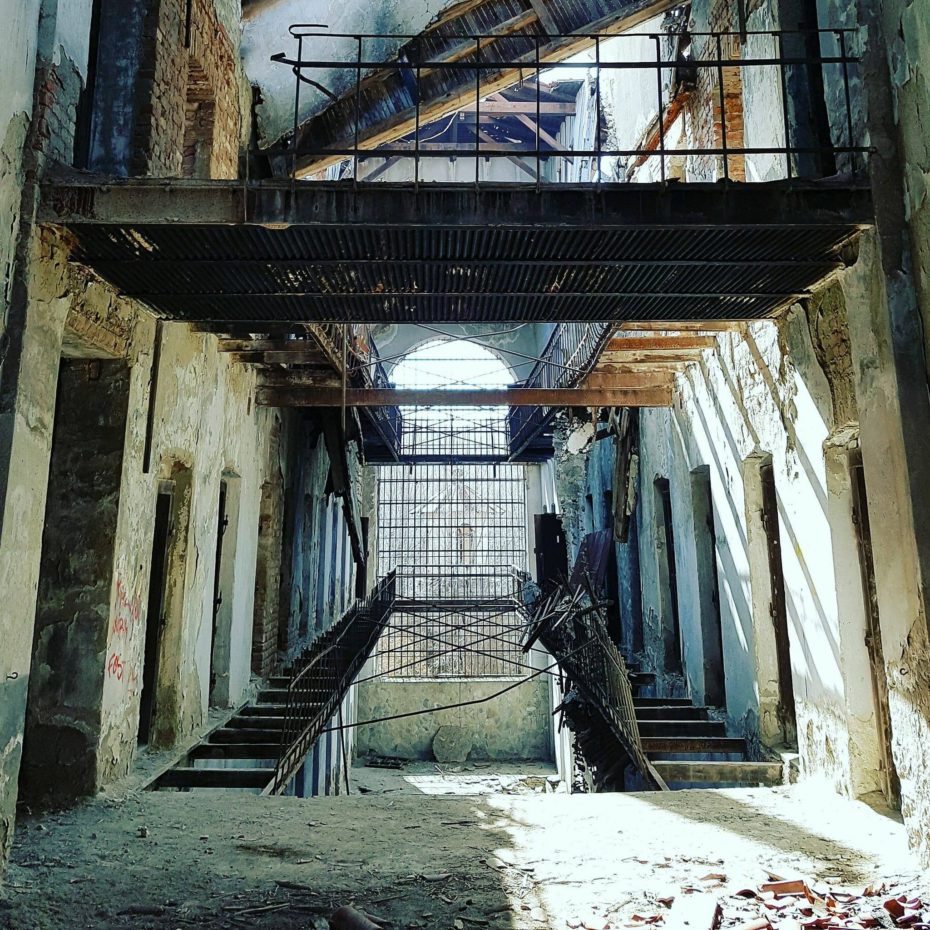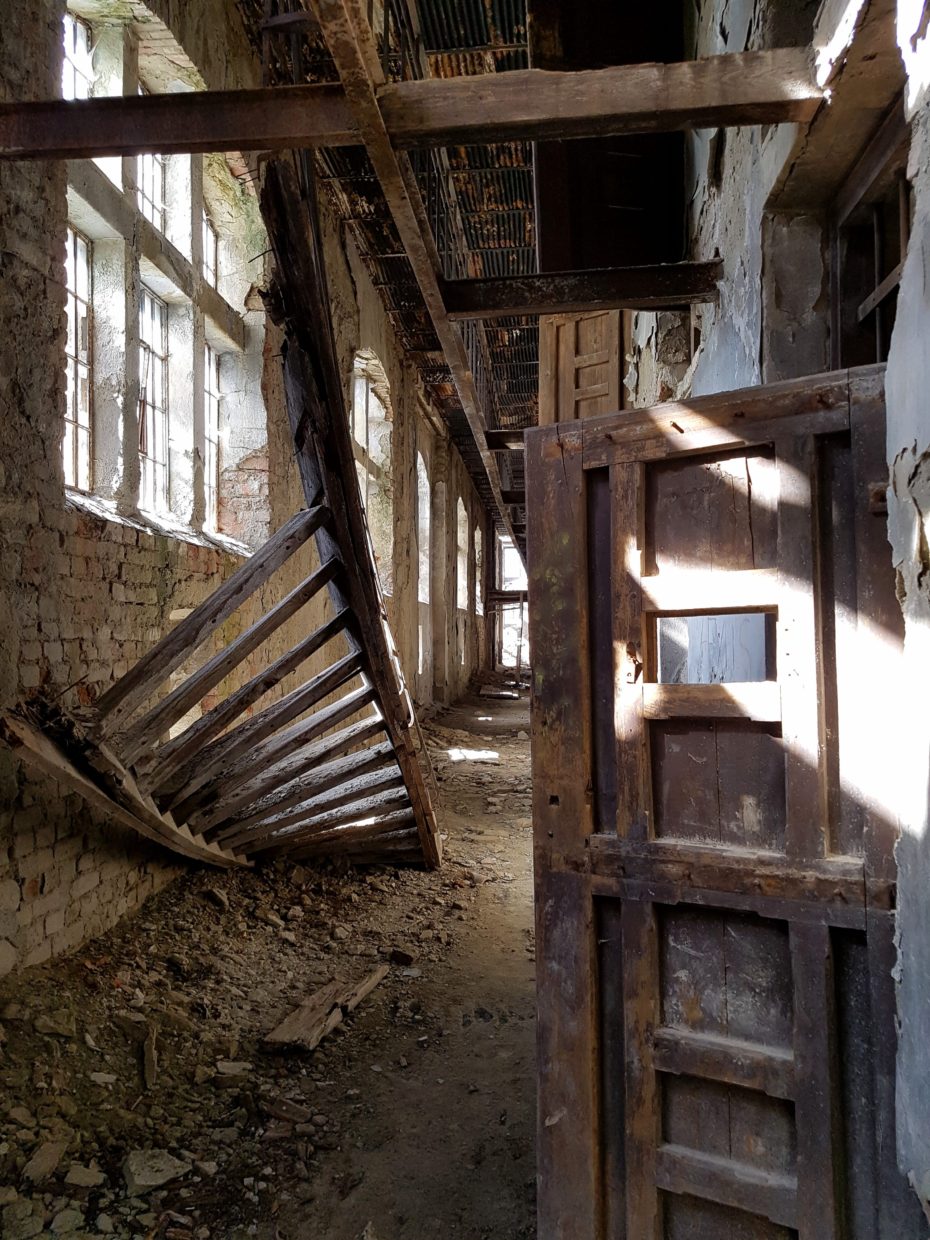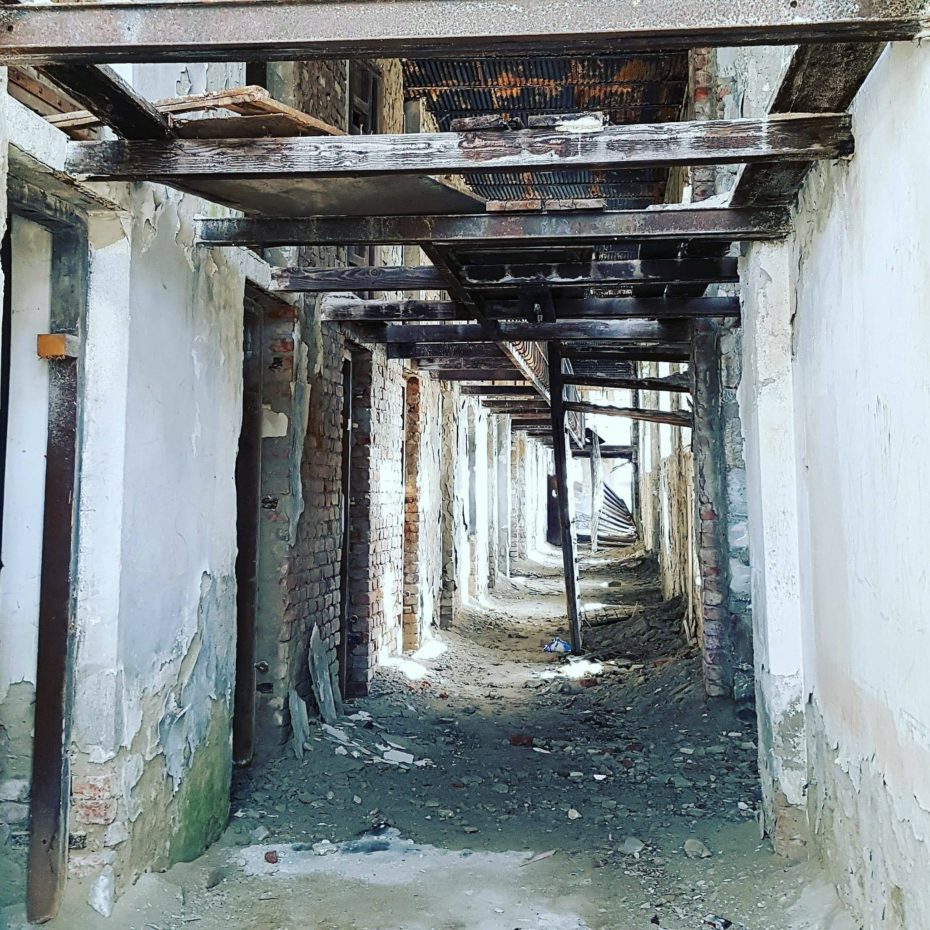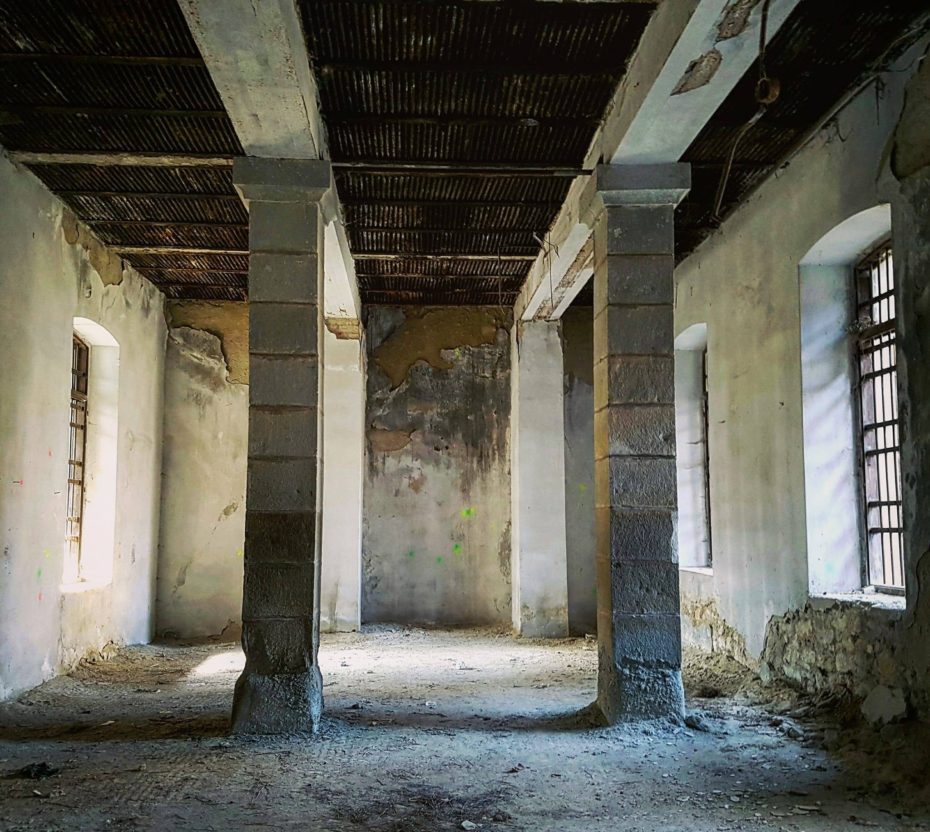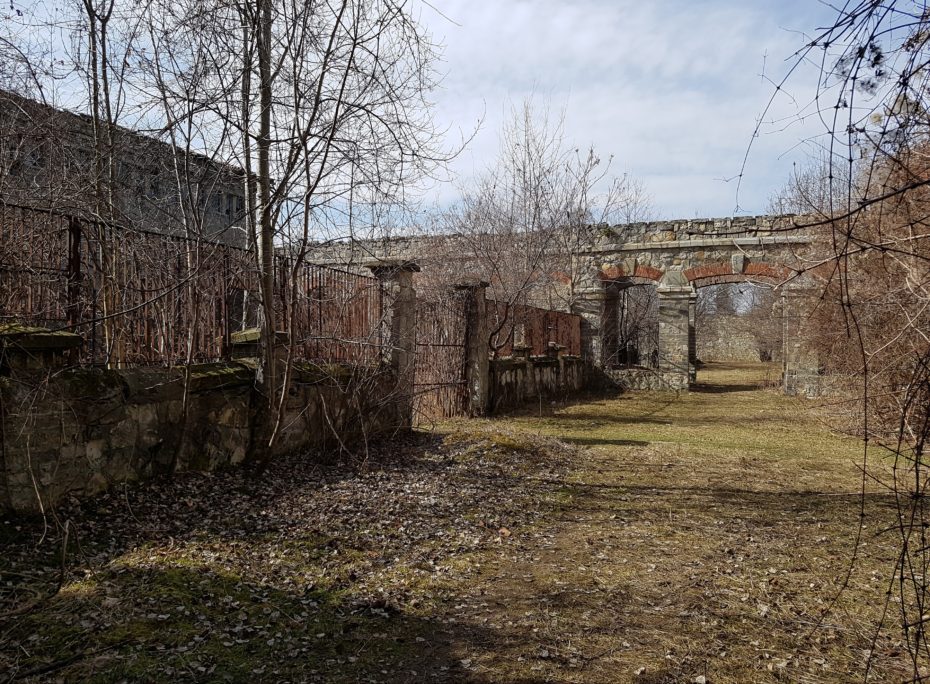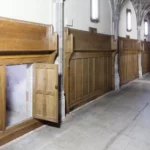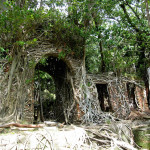Doftana Prison sits abandoned near Romania’s Carpathian mountains. Its foundations have been rocked by earthquakes, its roofs have been brought down by heavy snow and storms, and every winter the building crumbles a little more. There is still enough remaining to show the scale of the place and a sense of how a prisoner’s life was, but nothing remains of ‘Doftana Red’- the secret newspaper the inmates published under the noses of the guards in what was possibly the world’s most literary act of mass rebellion.
We only know it happened because for a brief time, the prison was converted into a museum, preserving the few scraps of evidence that survived. As nature is slowly destroying the building, those scraps– cigarette foils– have now disappeared.
Doftana was originally built in 1895 as a secure place to house workers from the nearby mines, and little is known about its occupants and background until it was repurposed as a prison some years later. As the Soviet Union rose in the East, the Romanian King Ferdinand I outlawed communism and anti-royalist organisations. Doftana became the main holding area for many suspected communists, and by the 1940s, the harsh conditions and guard brutality had earned it the nickname: “The Romanian Bastille”.
A steady stream of prisoners entering Doftana joined a large number of men already imprisoned for their part in a peasant uprising in 1907. It hardly seems surprising then, that such a gathering of assorted political rebels and thinkers would find a way to revolt.
As often happens, prison can do more to instruct inmates about crime than deter them from it, and it was the case at Doftana as well. Those brought in for petty crimes spent years in the company of communist thinkers and leaders, emerging with radical new ideas. Those imprisoned under suspicion of communist activity became ambitious, educated leaders-in-waiting.
These men held regular conferences inside the prison itself, and past prisoners included Gheorghe-Gheorghiu Dej (former prime minister of Romania), Nicolae Ceausescu (former communist dictator) and Max Goldstein (communist terrorist whose attempted bombing prompted the government to detain all suspected communists.)
1924 is the first year that the existence of a secret prison newspaper was acknowledged. Nobody knows for how long the paper was passed around before then, unseen but widely read, though guards remarked that the prisoners somehow knew what would be in the news before the official papers were published.
Prisoners used cigarette papers and foils for writing on and for a very brief time, pages torn from prison library books (the library was open for a very short time before being shut down). Pencils and existing newspapers were smuggled in from outside, often in the lining of clothes. Once somebody had written an article it was passed from cell to cell, edited and finally returned.
Once the full edition was finished, prisoners conspired with the local blacksmiths to transport Doftana Red outside. The iron bars on the smith carts were hollow so when blacksmiths came to fit chains on the latest batch of prisoners, they smuggled the rolled-up papers out in their carts. There are reports of the waterways being used too- papers were wrapped up and sent through the storm drains to join the River Doftana, then were picked up downriver.
In order not to be detected, prisoners used knocking codes on the walls, invented their own version of shorthand and shared information verbally as soon as new prisoners arrived from other detainment facilities or the outside world. They used tools like the ‘soft horse’ (a bag often made from a pillowcase, filled with contraband items and swung from cell to cell) and the ‘mouse’ (a thin piece of wood with a split that could hold pencils or paper like tweezers and pass them through narrow gaps). When a warden briefly attempted to ban inmates from talking to one another, they adopted a mixture of Morse code and sign language, and protested en masse until the ban was lifted.
To publish a secret newspaper inside a prison is achievement enough but when the conditions were as notoriously cruel as those in Doftana, it is a testament to resilience; prisoners were routinely beaten, starved and kept in freezing solitary confinement cells. Even more frightening was the knowledge that a natural disaster could strike at any time; over 300 inmates were injured when an earthquake hit in 1940. There had already been two previous quakes and despite pleas for prisoners to be relocated, the requests were refused.
The prison was closed in 1949 and reopened as a museum during the communist party rule. Exhibitions and educational displays cast many of the former prisoners as folk heroes and freedom fighters- a mixture of Che Guevara and Robin Hood. Gheorghe Gheorghiu-Dej was cast in especially flattering light; according to the museum, he had found himself outside the prison following the chaos caused by the 1940 earthquake but rather than make his escape, he re-entered the prison to save the lives of his fellow inmates. Nicolae Ceaușescu regularly visited the site during his reign as prime minister and encouraged communists to make pilgrimages to it.
After another earthquake in 1977, the building fell into disrepair and heavy snowfall in 2011 has taken most of the roof down. Though there were talks of refurbishing it and turning the ruin into a hotel in 2002, the project would cost over 1 million euros and no such work ever began. The grass beyond the walls is regularly mown but within the walls, the courtyard is overgrown and with most of the roof missing, parts of the prison get more sunlight than they ever did when the cells were full. Brambles are making their way in through the windows and young trees force their way out of cracks in the foundations. Left to its own devices, nature is slowly reclaiming Doftana prison; like the prisoners, quietly proving that even these walls can be breached by the most unlikely of things.


